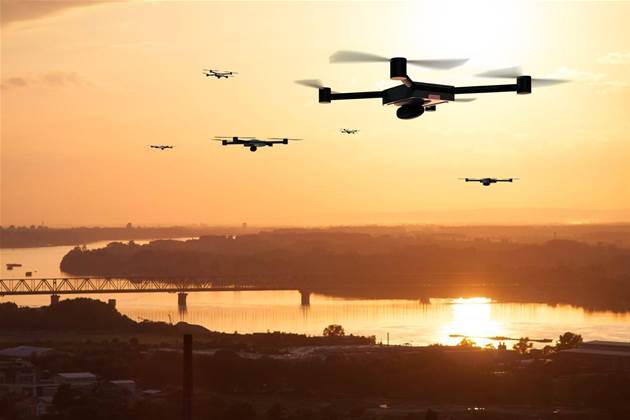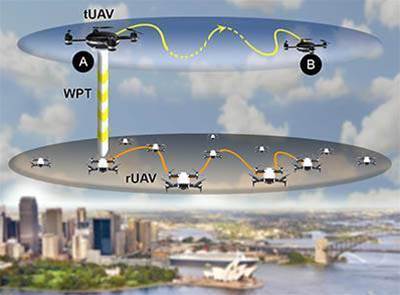Drones could soon be able to stay aloft indefinitely thanks to researchers at Central Queensland University (CQU) exploring drone-to-drone wireless energy transfers.

While the number of drones on the market has exploded in recent years - fuelled by an expanding array of use cases - one of the biggest challenges for the technology is its limited flight time.
And although it might be funny to watch footage of a photographer scrambling to catch their drone before it plunges into a lake after the battery ran out, the consequences are both costly and potentially dangerous.
If the drone were delivery medical supplies like blood or vaccines, for example, having that drone run out of power mid-flight could delay timely treatment in developing regions or after natural disasters where other infrastructure has been damaged.
"In recent years, Unmanned Aerial Vehicles (UAVs), also known as drones, have become technologically sophisticated due to the significant advances in robotics, sensor technologies, communication technologies and artificial intelligence,” said Dr Jahan Hassan, one of the researchers working on the wireless radiative power transfers (WRPT) project.
Her colleague, Dr Ayub Bokani, added on-board batteries trying to both sustain flight and those additional technologies can have flight times as short as 18 minutes.
The concept for wirelessly charging drones isn’t entirely new - Global Energy Transmission (GET Corp) in the US has developed prototypes of ground-based transmitters which drones hover above to receive a boost through wireless radiative power transfers.
Using a stationary recharging network, however, means the drones have to hover above the transmitters for several minutes, wasting energy when they could just land instead.
It also means drones have to deviate from or adjust their flight path to get to the base station, wasting yet more time and energy.
CQU’s project, however, works on a similar model to phone-to-phone charging which has recently featured on some flagship smartphones, where one drone would wirelessly transmit power to another drone carrying a payload or performing other kinds of work.
Working with the University of New South Wales’ Professor Salil Kanhere, Bokani and Hassan will also be exploring how drones can make the most of additional electricity that gets sent their way.
"Using a branch of artificial intelligence, we are also working on jointly optimising the mechanical energy consumption which comes from UAV movements and optimising the communication energy consumption which comes from UAVs communicating with other nodes," Bokani said.






.png&h=140&w=231&c=1&s=0)





 iTnews Executive Retreat - Security Leaders Edition
iTnews Executive Retreat - Security Leaders Edition












_(1).jpg&h=140&w=231&c=1&s=0)



